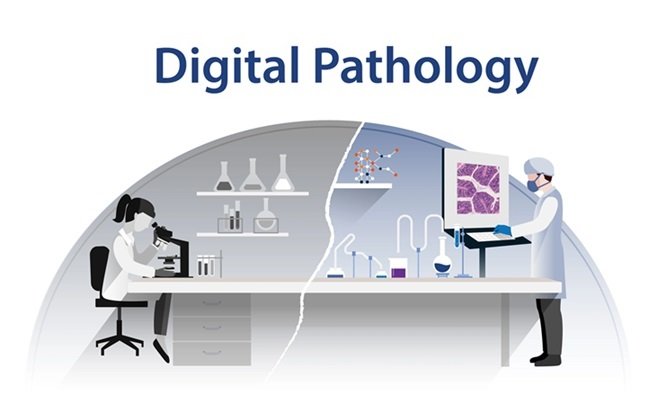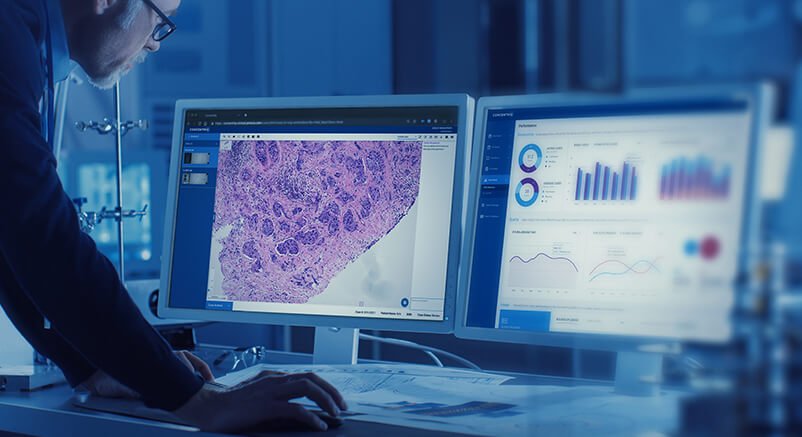Table of Contents
Digital pathology, a cutting-edge field, harnesses high-resolution digital images from tissue samples to enhance disease diagnosis and treatment planning. Recently, AI tools have been customized to streamline this complex process, providing significant benefits to medical professionals.
The Role of AI in Digital Pathology
Traditionally, pathologists spend countless hours examining tissue samples under a microscope, a labor-intensive process with potential for human error. AI tools can now analyze these images swiftly and accurately, identifying patterns and anomalies that might be overlooked, leading to quicker and more precise diagnoses.
Customizing AI for Specialized Needs
Researchers have made a significant leap by customizing AI tools, specifically language models like ChatGPT, for digital pathology. General AI models, while versatile, often lack the specificity required for specialized fields. By fine-tuning these models with data from hundreds of digital pathology publications, researchers have created a specialized version, GPT4DFCI, designed to answer complex questions with high accuracy.
Practical Implementation
For example, when a pathologist needs information on the latest biopsy techniques, GPT4DFCI can provide detailed, accurate responses by accessing a curated database. This saves valuable time and ensures that the information is both precise and current. Such tools are invaluable in real-life scenarios where timely and accurate data can significantly impact patient care.
Addressing Common AI Challenges
General AI models sometimes produce broad or inaccurate information, which can be problematic in fields like pathology. To mitigate this, researchers employed a technique called retrieval-augmented generation (RAG). This method allows the AI to retrieve relevant documents from a specialized database, ensuring responses are accurate and contextually relevant. This approach is crucial for maintaining the high standards required in medical diagnostics.

Making Advanced Software Accessible
One major challenge is that powerful tools for analyzing histopathology images, like PathML, often require programming knowledge, limiting their use to those with coding skills. By integrating ChatGPT into PathML, researchers have enabled pathologists to use natural language queries to receive step-by-step coding instructions. This innovation democratizes access to advanced digital pathology tools, allowing more professionals to leverage these technologies without needing extensive coding expertise.
Real-Life Scenario
Consider a pathologist who needs to analyze complex histopathology images but lacks programming skills. With the integrated AI in PathML, they can input natural language questions and get clear coding instructions. This not only streamlines their workflow but also enhances the accuracy of their analyses, improving overall diagnostic capabilities.
Expanding AI’s Reach in Medicine
The success of customized AI tools in digital pathology suggests a broader application potential. This approach can be replicated in other medical specialties, creating AI tools tailored to the unique needs of each field. Customizing AI models enhances the accuracy and efficiency of medical diagnostics across various domains, ultimately benefiting patient care.
The Future of Digital Pathology and AI
As AI technology advances, its integration into digital pathology will become more profound. The potential for AI to assist and revolutionize medical diagnostics and treatment planning is immense. Ongoing research and development in this field promise a future where medical professionals can rely on highly specialized AI tools to provide the best possible care for their patients.
Conclusion
The customization of AI tools like ChatGPT for digital pathology marks a significant advancement in medical technology. These specialized tools enhance diagnostic accuracy and make sophisticated software more accessible to a broader range of medical professionals. As AI evolves, its potential to transform healthcare grows, paving the way for a future where medical diagnostics are faster, more precise, and universally accessible. The integration of AI into digital pathology is not just a technological advancement; it’s a leap towards more efficient and effective healthcare.
For more details on the ongoing research and its implications, you can read the full article here.




Leave a Reply